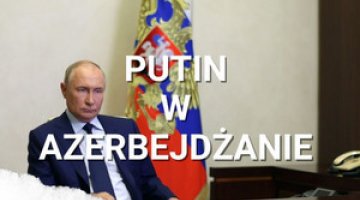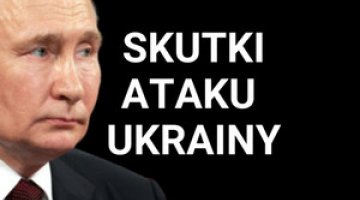The Russian attack on Ukraine: day 21

The General Staff of the Armed Forces of Ukraine has ceased giving information about the situation in individual lines of defence. The Ukrainian army reports that it has inflicted losses on the aggressor’s troops, and is proceeding with local counterattacks. The Russian forces are mainly focused on strengthening and defending the positions it has already occupied, and are continuing missile & air strikes and shelling. During the last 24 hours, the Russians have intensified the destruction of radio and television signal transmission stations, including some in western Ukraine. They are also continuing to transfer reserves from the Eastern Military District (MD).
In the Polessie direction, there have been sporadic clashes (mainly around Irpin near Kyiv). During the artillery exchanges, the command post and the logistics centre of the Russian 35th Military Army of the Eastern Military District were destroyed. The aggressor introduced its previously accumulated reserves in order to resume the offensive in the Vyshhorod region north of Kyiv. In the Severny direction, Russia has continued centring its units on the eastern outskirts of Kyiv, and new forces have been observed entering the area of Bohdanivka and Velyka Dymerka, which border on the Brovary region. During a firefight in the vicinity of Chernihiv, the defenders destroyed a logistics centre containing ammunition and fuel. Ukrainian units in Sumy oblast attacked the bases of Russian troops in Boromla, Okhtyrka and Velyka Pysarivka.
In the Slobodka direction, fighting is taking place south of Izyum (street battles are taking place in the besieged town), in which the Ukrainian forces are trying to halt the aggressor’s move towards Slavyansk. Kharkiv has been under fire for another day. In the Donetsk direction, the defenders halted a Russian offensive on the western borders of Luhansk and Donetsk oblasts. As a result of the clashes and shelling in Lisichansk, Severodonetsk and Rubizhne, the infrastructure was seriously damaged and there was civilian loss of life. Mariupol has also been bombarded for another day.
In the South Buzhany direction, the aggressor’s forces entered Dnipropetrovsk oblast: fighting took place 35 km south of Kryvyi Rih. The intensity of fighting and shooting in the area of Mykolayiv has decreased. A group of Russian air-supported ships fired at coastal towns southwest of Odesa (Sanzhiyka, Zatoka, Bilenke and Lebedivka), but there were no attempts at landing.
When assessing the Russian losses, the Ukrainian General Staff emphasises that their figures are estimates. As of 24 February, the Russians have allegedly lost c. 14,000 troops, 444 tanks, 1435 armoured vehicles, 201 artillery systems, 72 multiple rocket launchers, 43 air defence systems, 86 aircraft, 108 helicopters, 864 wheeled vehicles, 11 unmanned aerial vehicles and 60 fuel tanks. According to the Russian defence ministry, Ukrainian losses amounted to 181 aircraft and helicopters, 172 unmanned aerial vehicles, 170 anti-aircraft missile launchers, 1379 tanks and other armoured vehicles, 133 multiple missile systems, 514 guns and mortars, as well as 1168 wheeled vehicles.
The Ukrainian authorities have reported that the activity of saboteurs and subversive groups is increasing. The Centre for Counteracting Disinformation warns that people belonging to Russian sabotage groups may have entered from EU countries, and very often use press cards bearing false names. According to the interior ministry, sabotage groups are present in most of Ukraine’s territory, especially in Kyiv and the Lviv, Ivano-Frankivsk and Rivne oblasts.
Russian troops are committing more war crimes. 53 civilians were killed in Chernihiv, including 10 people who were queuing for bread. Private houses in Sumy are being demolished and looted. A column of refugees from Mariupol came under artillery fire and seriously injured five people. During an extraordinary session of the North Atlantic Council, Ukrainian defence minister Oleksiy Reznikov confirmed that over the last three weeks the Russian aggressors had killed 103 Ukrainian children, crippled over 100 more, and killed around 3000 civilians. Mariupol’s authorities estimate the loss of the civilian population in their city at around 20,000 people.
The Ukrainian government announced that on 17 March it plans to open nine humanitarian corridors towards Zaporizhzhia, Zhytomyr and Brovary near Kyiv. Field fuel stations for private vehicles are to be set up along these routes. There are plans to deliver humanitarian aid to the towns of Hostomel and Bucha. On 16 March, 6426 people came from Mariupol to Zaporizhzhia, including 2039 children. More evacuation trains have been introduced along routes from Kharkiv to Lviv, Kharkiv to Uzhhorod, Dnipro to Lviv and Kramatorsk to Lviv. It should be expected that the Russians will continue to hinder the evacuation of the civilian population and shell these routes. The mayor of Melitopol, Ivan Fedorov, who had been kidnapped by Russian forces, was released in exchange for nine Russian prisoners of war who, according to the Ukrainian side, were inexperienced soldiers from the autumn draft.
According to the energy ministry, the war has led to 933,000 people being cut off from electricity, and damage to 38 compressor stations, which has cut off gas supplies to 254,000 recipients. At the same time, on 16 March, the grid operators of continental European countries associated in ENTSO-E agreed to start a trial synchronisation of the European power grid with those of Ukraine and Moldova.
The Border Guard of the Republic of Poland reported that 1.95 million people had entered Poland from Ukraine as of 24 February. On 16 March, 60,000 refugees crossed into the country (down by 11% compared to the previous day). The Ukrainian border service reported that as of 24 February, over 310,000 people, mostly men, have returned to Ukraine to defend the country.
The Russian-Ukrainian talks have still not brought any breakthroughs, and the parties are issuing contradictory messages. The representative of the Ukrainian president’s office, Mykhailo Podolyak, expressed his concern that the Russian side “wants to gain time to prepare the next phase of the offensive” by prolonging the talks. President Volodymyr Zelensky said that Ukraine is seeking “guarantees of absolute security”, and that the negotiations “should lead to a ceasefire and restoration of Ukraine’s territorial integrity.” The Russian side suggests that the option of granting Ukraine neutral status similar to Austria and Sweden’s has been discussed during the talks. The negotiation process and Moscow’s position is affected by Putin’s emotional attitude; he announced that the “special operation” would continue as it was “a fight for Russia’s sovereignty and future”. A spokeswoman for the Russian foreign ministry expressed her hope that Kyiv would acknowledge the inevitability of a “peaceful solution to the problem of demilitarisation and de-Nazification” and transforming Ukraine into a neutral state. Russia has made a ceasefire conditional on Kyiv accepting these conditions.
President Zelensky delivered a message to the US Congress in which he compared the attack on Ukraine with the attacks on Pearl Harbour and September 11, and described the Russian actions as a kind of terror that had not been seen in Europe for 80 years. He called for an increase in sanctions, and – in the absence of consent to close the airspace over Ukraine – for the transfer of as many anti-aircraft weapons and Soviet-made aircraft as possible. On 17 March, he also appeared by video link at a session of the Bundestag, where he accused Berlin of being indirectly responsible for the Russian aggression by blocking Ukraine’s integration with the EU and NATO.
The US has granted Ukraine a new US$800 million military aid package. The deliveries will include 800 Stinger air defence systems, 2000 Javelin anti-tank missile systems, 1000 light anti-tank guns, 6000 AT-4 anti-tank grenade launchers, 100 tactical unmanned aerial vehicles, 5 Mi-17 helicopters, 5000 automatic rifles, 1000 pistols, 400 machine guns and 400 smoothbore rifles, over 20 million grenades, mortars and rounds for small arms, 25,000 sets of bulletproof vests and 25,000 helmets. The United States will also continue to provide satellite reconnaissance intelligence.
The International Court of Justice in the Hague issued a ruling ordering Russia to halt the invasion because there were no signs of the ‘genocide’ Ukraine was allegedly carrying out on the Russian-speaking inhabitants of the eastern part of the country, which was the Kremlin’s pretext for starting the war. Only two of the fifteen judges (from Russia and China) voted against. Under the Charter of the United Nations, enforcement of the Court’s judgments is mandatory, however, there are no means to enforce them.
Commentary
- As the third week of the war comes to an end, the situation in the combat zones has stabilised. In the north, the actions are mainly static: both sides are mustering their forces and firing at each other’s positions (the aggressor is continuing to launch ground-to-air strikes), and there are individual clashes at single locations (such as Irpin) or in sporadic bursts. In the south, the Russian attack continues, but it has lost its earlier momentum, and the troops are moving forward at an average pace of several kilometres a day. The northern part of Donetsk oblast remains under Ukrainian control, and in the rest of the area, the fights for cities (mainly in the Severodonetsk area) are already being carried out deep into the Russian groups, and on the western border of Luhansk and Donetsk oblasts. In previous days the Russians had created a land bridge linking their forces in the Donetsk and Zaporizhzhia oblasts of over 80 km in width, which makes it easier for them to attack humanitarian aid convoys and the residents of Mariupol who are trying to leave the city.
- The offensive actions by the Ukrainian forces as announced boil down to localised counterattacks in regions where the line of military contact has become relatively stable in recent days. Ukrainian units remaining inside the Russian groups are also active. In both cases, the recovery of previously lost regions is sporadic, and mostly involves small towns along the line of contact (most often the suburbs of large cities), which does not change the combatants’ general location. Most of the Ukrainian counterattacks come down to handing the aggressor some losses and then retreating to their previous positions.
- Russian forces are continuing to terrorise the civilian population. The number of residential houses being destroyed is growing; people who do not show aggression or resistance to the occupiers are being killed deliberately, and private property is being looted. The aggressor’s troops are still firing at the evacuation routes. This type of action is intended to weaken the morale of Ukrainian society and thus force the authorities to make concessions in the peace negotiations. So far, there has been no indication that this strategy is effective.
- The Ukrainian side has warned of increased activity by Russian sabotage groups and people supporting the attackers’ military reconnaissance throughout the country. Their appearance in Ukraine’s western oblasts proves that the Russians are interested in obtaining information about their opponents’ plans for mobilisation, and in identifying routes for the supply of weapons to Ukraine from the West.
- The aid coming from the US will complement the combat potential of Ukraine’s land forces. The delivery of new batches of light anti-tank and anti-aircraft units in the current combat conditions will increase the invader’s losses, especially of tanks, armoured vehicles and aviation. However, the Ukrainian side has stressed that the most important weapons it is expecting are anti-aircraft missile systems which can destroy Russian cruise missiles.
- The connection of the Ukrainian and Moldovan electricity grids with ENTSO-E was brought forward by 10 months, at Kyiv’s request of 27 February. This was related both to the Russian aggression and the test of the system’s operation in isolated mode (i.e. in isolation from the Russian and Belarusian grids), which had started three days earlier. The synchronisation became technically possible after ENTSO-E analysed and then implemented a number of measures ensuring the mutual security of the power systems. Thanks to this process, operators from continental Europe are now supporting the stability of Ukraine & Moldova’s power grids and deepening their cooperation with the local network operators, Ukrenerho and Moldelectrica. Meanwhile some Ukrainian power plants, including the Kakhiv Hydroelectric Power Plant and the nuclear power plant at Enerhodar (the largest in Europe) are still under the control of the aggressors, although they are still generating power which Ukrenerho is distributing.




